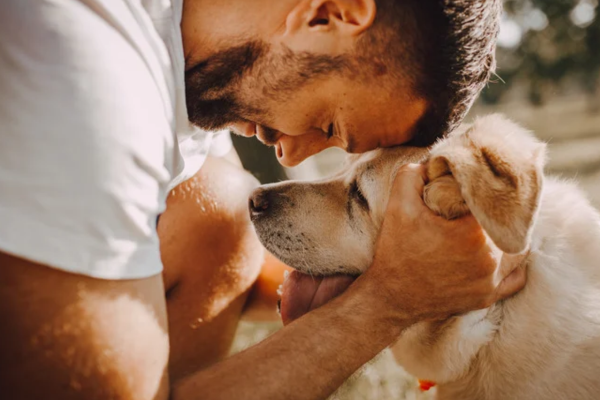Most people picture a service dog helping a blind person navigate public spaces or cross a street. Many do not realize the numerous “invisible disabilities” that service dogs can be trained to assist with. These conditions may not be immediately apparent to the public, but they are life-altering disabilities nonetheless.
An increasing number of service dog teams support individuals with psychiatric, neurological, or chronic medical conditions. All of these are disabilities that you cannot see. Let’s explore what this means and how service dogs change the lives of those living with these disabilities.
What Are Invisible Disabilities?
Invisible disabilities are physical, mental, or neurological conditions that are not always visible to the general public, but still impact an individual’s ability to conduct day-to-day tasks.
Common examples of invisible disabilities include:
- Post-Traumatic Stress Disorder (PTSD)
- Autism Spectrum Disorder
- Epilepsy
- Diabetes
- Panic or Anxiety Disorders
- Chronic Pain or Fatigue Conditions
- Traumatic Brain Injury (TBI)
These conditions can cause distress, disorientation, or medical emergencies that task-trained service dogs can assist with.
Service Dog Tasks for Invisible Disabilities
Service dogs go through training to perform specific tasks related to their handler’s disability. These tasks may include:
PTSD and Anxiety Disorders
- Interrupting panic attacks or repetitive behaviours
- Guiding the handler away from triggers
- Providing deep pressure therapy
- Waking the handler from night terrors
Autism Spectrum Disorder
- Prevent bolting
- Creating space in crowded areas
- Providing a calming and stabilizing presence
- Alerting caregivers when a medical event occurs
Epilepsy and Diabetes
- Alerting to oncoming seizures or blood pressure changes
- Retrieving medication or alerting others for help
- Staying beside their handler during or after a medical episode
These dogs are so much more than pets; they are highly trained and are critical tools for independence and safety!
Why Public Awareness Matters
People with invisible disabilities often face skepticism. They will be questioned about their disability or told that they “don’t look disabled”. When accompanied by a service dog, they might be unfairly challenged or denied access because the public expects to see a physical impairment. This behaviour is discrimination. The ADA protects all individuals with qualifying disabilities, whether visible or not. Service dogs are legally allowed to accompany their handler in public spaces, no matter how their disability presents.
What Not to Do:
If you see a service dog team in public, refrain from:
- Asking what their disability is. This is private information that people are not required to divulge.
- Asking for certification or registration documents. There is no legal requirement under the ADA for service dogs to be registered.
- Distracting the dog. They are working, even if they don’t appear to be in your eyes.
Creating an Inclusive Environment
Within workplaces, schools, and public facilities:
- Educate staff and students about invisible disabilities and service dog etiquette.
- Respect access rights and don’t make assumptions about individuals based on appearance.
- Understand that service dogs are part of a person’s medical treatment plan; this is not a personal preference.
People with invisible disabilities deserve the same respect, access, and dignity as anyone else. Service dogs allow individuals to live full and independent lives, despite their disabilities. Whether navigating a panic attack, managing seizures, or facing overstimulation at work or in a classroom, these dogs are ready to assist.
Let’s move toward a world where service dog teams are welcomed and people are trusted to know what they need!


